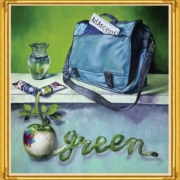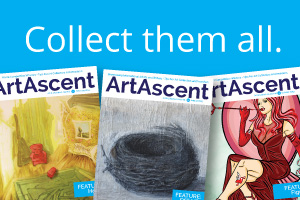Buying what you like
It may be a cliché, but in the acquisition of art for purposes of investment, “buy what you like” is a good piece of advice. This statement of conventional wisdom holds true; however, only if you are confident in your taste.
The most successful collectors are constantly refining their taste. Enthusiasts of visual art do this by regularly visiting commercial and public galleries, attending gallery talks and lectures, reading art books and constantly discussing art with dealers and curators. As knowledge of art is acquired, taste is refined. As a consequence, the risk in investing in art decreases. With increasing knowledge, your confidence in your eye or your taste will develop so that you can be assured that buying what you like will be rewarded.
The daily dividends of investing in art are non-monetary. Nevertheless, they are inherently valuable. They consist of the pleasure of looking at your treasure or treasures and, from time to time, sharing this delight with others. If you haven’t bought what you like, you will not reap these dividends and, thus, you will not be getting full value from your investment.
The only monetary reward in investing in art is through capital appreciation. This, of course, is dependent on the price of acquisition and the proceeds at disposition. Capital gains in art investment are as difficult to predict as those accruing from any other investment vehicle. The goal of buying low and selling high involves risk. Your knowledge and your taste will be essential in selecting a work for acquisition. If you are buying a piece you like by an emerging artist with a low retail price, you will carefully consider the possibilities that the artist will continue working, develop in skill and that his or her work will gain in popularity in the market. In acquiring a work by an established artist who has already gained a reputation regionally, nationally or internationally, you will likely not be buying the work at a record low price. In this case, your risk will be less because the work will, in most instances, at least retain its value. Being a knowledgeable collector with a good eye will ensure that when you buy what you like, you will be confident in its investment potential and, most importantly, you will enjoy the dividends.
The taste of a disciplined and astute collector of art will naturally correspond to the taste of other collectors. The demand for the works of a particular artist or school of artists or genre of art impacts monetary value. After years of enjoying your treasured possession that was acquired because you liked it, it can be disposed of, perhaps delivering substantial capital gains, because there is a market for it among others who also like it.
There are pitfalls in buying what you like. Taste in art changes over time. The cutting-edge quality of art that once made it exciting and in demand often diminishes over time. Some genres of art fall out of fashion, and the market will reflect this. You may find it hard to part ways with a piece that you truly enjoy. Some collectors avoid this permanent parting with their art works by donating them to public museums and galleries where they, like old friends, can be visited on occasion.
The only guarantee in investing in art is the non-monetary dividend of pleasure. If you bought what you like, it should wear well over time and your dividends should increase.
Dr. Alan McNairn







